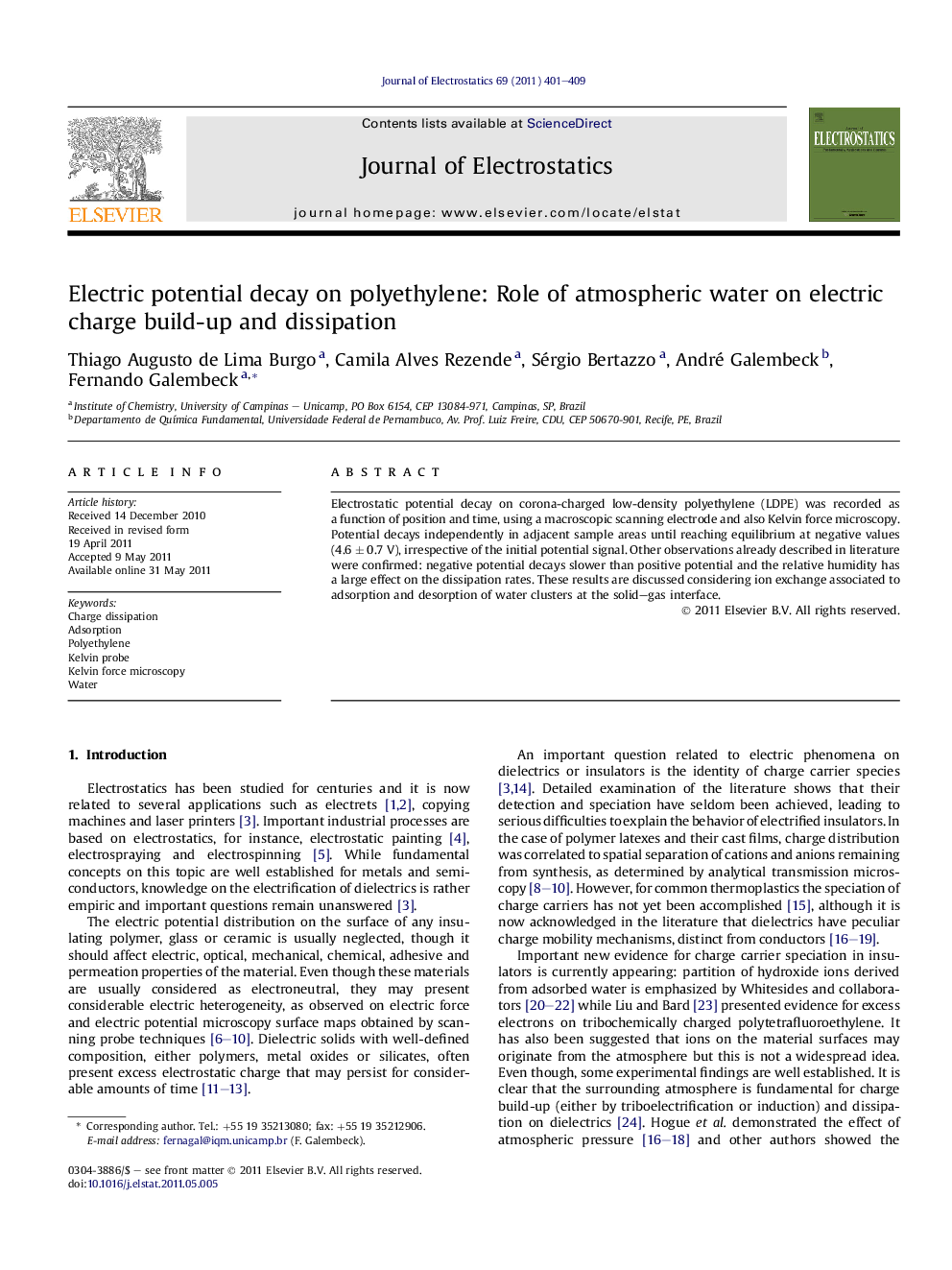| Article ID | Journal | Published Year | Pages | File Type |
|---|---|---|---|---|
| 727108 | Journal of Electrostatics | 2011 | 9 Pages |
Electrostatic potential decay on corona-charged low-density polyethylene (LDPE) was recorded as a function of position and time, using a macroscopic scanning electrode and also Kelvin force microscopy. Potential decays independently in adjacent sample areas until reaching equilibrium at negative values (4.6 ± 0.7 V), irrespective of the initial potential signal. Other observations already described in literature were confirmed: negative potential decays slower than positive potential and the relative humidity has a large effect on the dissipation rates. These results are discussed considering ion exchange associated to adsorption and desorption of water clusters at the solid–gas interface.
Graphical abstractFigure optionsDownload full-size imageDownload as PowerPoint slideHighlights► LDPE surface heterogeneity is revealed by electrostatic potential mapping. ► Large potential gradients (10–15 MV/m) are measured along the surface. ► Potential decay is faster in the initially positive areas. ► An equilibrium potential −4.6 V is reached in initially positive and negative areas. ► Humid atmosphere is a charge reservoir for dielectrics.
